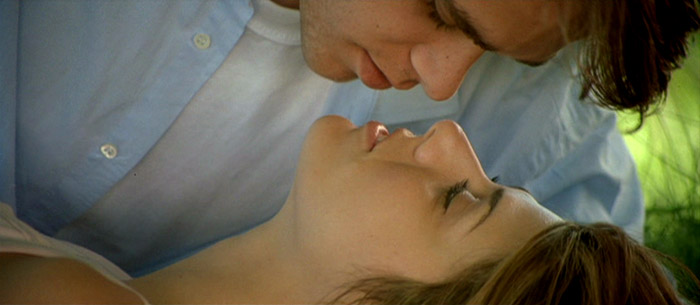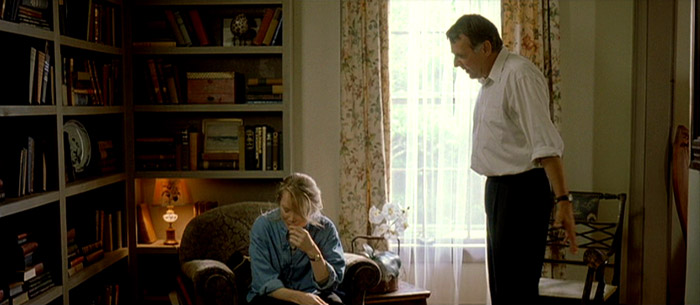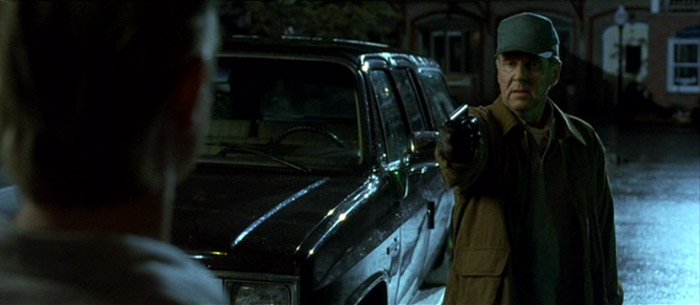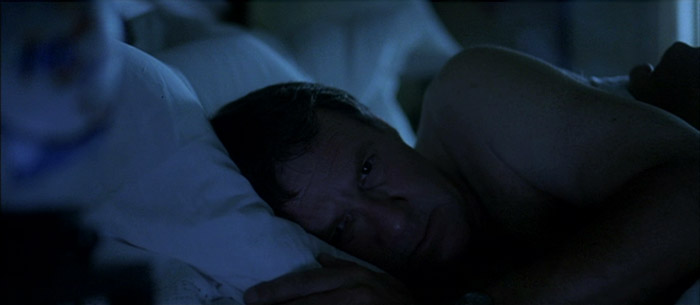Director Todd Field’s 2001 indie hit In the Bedroom is one of my biggest film influences. It forever changed the way I consider what the story structure of a film can be. This is a heartbreaking film, steeped in deep emotional suffering, melancholy, and regret. If you haven’t seen it, I recommend you stop right here. Spoilers abound.
First, you should understand the three-act structure that most narrative screenplays follow. Wikipedia goes into much more detail, but in short:
- The first act sets the stage, culminating in an inciting incident.
- The second act sees the protagonist(s) struggle against the problem(s) at hand. He/she/they develop and grow in the process.
- The third act contains the climax and resolution.
In Act One of In the Bedroom we are introduced to a blossoming relationship between a young man, Frank, and an older divorcée, Natalie. Frank’s parents, Matt and Ruth, are against the relationship, but they love their only son and don’t fight too hard against it. Natalie’s ex-husband, Richard, is angry and abusive, and becomes increasingly hostile toward Frank and Natalie. Eventually Richard murders Frank, which is the inciting incident that brings this act to a close.
Act Two is the fallout from Frank’s murder. Everyone is devastated, none more so than his parents Matt and Ruth. Their lives are derailed by their only son’s death. Many scenes play as vignettes: we see snippets of their suffering, but no progress—no learning—no hope—to accompany it. Matt and Ruth are drowning in their despair, and that is the entirety of this very unorthodox second act.
On paper, it shouldn’t work at all. There is no momentum propelling us to a suitable finish; the film is a dying fish, flopping on the deck. Any professional would look at this screenplay and cry bad storytelling. But on film, the sheer power and emotion behind the performances keeps the ship afloat. The audience stays because they’re invested in these characters. We want to know how they’re going to get on with their lives, even though we are given no inkling of how that might come to pass.
I love this deviation from the three-act structure, not only because it succeeds but because it does so with a purpose: the structure of the film reflects that of Matt and Ruth’s lives. Just as their lives are left in pieces, so too is the film. When Richard pulled the trigger, he broke In the Bedroom. The film doesn’t know where to go next, just like the bereaved. It’s a brilliant mirroring of story and craft, of which I am hard-pressed to find an equal.
Only an event of some magnitude could jolt this story back onto the tracks, and the shocking transition between the second and third acts does not disappointment. Matt confronts Richard after work and wordlessly stares at him with sadness and pain. We’re expecting a conversation here, but then Matt pulls a gun. He coerces Richard back to his place to pack a bag for the stated purpose of him leaving town. We learn shortly after that this is a ruse, as we watch Matt kill his son’s murderer in turn.
Even those who are well-acquainted with the three-act structure might miss the start of the third act: it happened the moment Matt lifted his gun into frame. This is not only mid-scene, which is uncommon enough, but also mid-shot, which is rarer still. In an instant, the overwhelming victimhood defining Act Two vanishes, giving way to a brooding, ominous Act Three climax. It’s a jarring handoff in and of itself, but even more so given the length of time we’d just spent languishing in an uncertain second act.
All rules are made to be broken. But when you break a rule not only with effect, but with purpose, you’ve done something extraordinary.
In the Bedroom is extraordinary.




